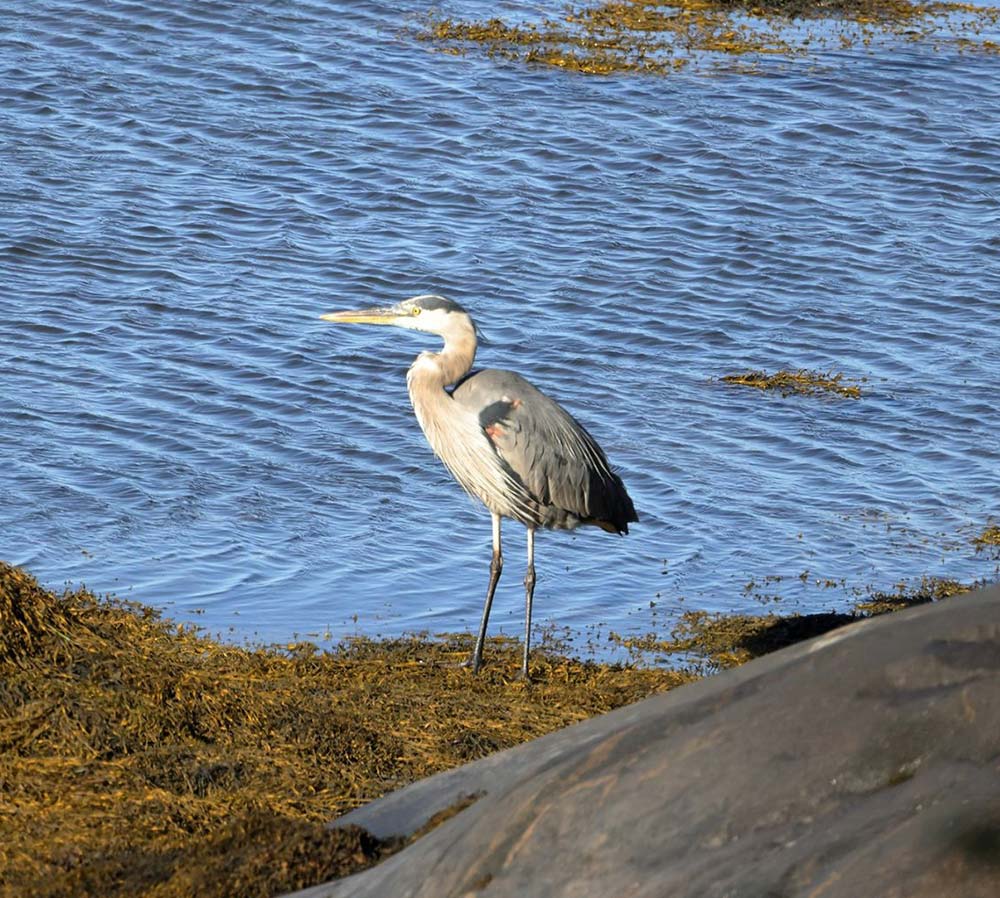Sept-Îles, May 1, 2015 – This morning, the City of Sept-Îles, Corporation de protection de l’environnement de Sept-Îles, Développement économique Sept-Îles, and the Port of Sept-Îles submitted the Phase I report of the Environmental Observatory for the Bay of Sept-Îles, which was conducted by INREST research institute for northern environment and occupational health, a non-profit organization whose sole mission is to manage the environment and occupational health research unit at Cégep de Sept-Îles.
“I’m pleased that the first annual monitoring report has been submitted since the observatory was created in the fall of 2013,” said Sept-Îles mayor Réjean Porlier. “This is a testament to the determination of the partners involved to work together on environmental and sustainable development issues. In the medium term, this initiative will give the community a comprehensive overview of the bay.”
“This initial phase and subsequent phases will integrate the objectives pursued by Green Marine,” added Pierre D. Gagnon, president and CEO of the Port of Sept-Îles. “It will help protect our valuable marine ecosystems and ensure responsible planning based on sustainable development values. This innovative initiative reflects the environmental leadership of our community.”
From the beginning, the stakeholders agreed to entrust the project to INREST in order to foster scientific knowledge within the community and to ensure the research is carried out methodically and with the expertise it requires.
“The scientific integrity and professional ethics of the team members were upheld throughout the project,” said Dr. Julie Carrière, director of INREST and an engineer and researcher. “The data in the report is representative of existing environmental conditions we observed during sampling at selected locations and times.”
Work
The work carried out in 2013 was the first step in collecting data that will make it possible to obtain a preliminary overview of the environmental quality in the fall. Methodology:
- Sixty (60) water samples were collected and tested in the laboratory, and seventy-five (75) temperature, salinity, conductivity, and dissolved oxygen readings were taken.
- Twenty-five (25) sediment samples were collected and tested in the laboratory.
Conclusion
- All the water quality parameters analyzed meet the standards and criteria in force.
- We noted three sulfates that exceed the reference value.
- A thorough analysis of the bacteria present in the effluents and in the marine environment must be carried out.
- No samples exceeded sediment quality standards.
- Only certain criteria levels for the quality of marine sediment in Quebec were exceeded, including levels for certain polycyclic aromatic hydrocarbons (PAHs) and certain metals. These criteria are the rare effect level (REL) and/or threshold effect level (TEL) and/or occasional effect level (OEL).
Recommendations
- In future sampling campaigns, data should also be collected in the spring and summer.
- Certain recommendations have been or will be made for upcoming campaigns, including:
- Analysis of metals and suspended solids in water
- Sediment particle size
- Two additional sampling stations for each type of analysis (water and sediment)
- The City of Sept-Îles and local industries were invited to set certain parameters for the sampling of their discharge points, as well as to provide their past data and any future data they may collect
“INREST told us that there is nothing disconcerting about the initial fall results, but that the preliminary data is incomplete. The observatory project is evolving and will be updated based on further sampling campaigns and available budgets,” said Sept-Îles mayor Réjean Porlier.
The report is available online at www.baie.septiles.ca. The public can submit questions by completing the questionnaire provided for this purpose by Sunday, May 31, 2015. After that date, all questions received will be compiled and the answers published on this site. The response time will be determined once the number and complexity of questions received has been assessed. The report will also be available on the Port of Sept-Îles and INREST websites. Paper versions are available for on-site consultation at the Louis-Ange-Santerre Library, the Wilfrid-Gallienne Centre in Moisie, and the Marguerite Community Centre in Gallix.
Follow-up
Phase II of the project, which was completed in the fall of 2014, took into account the observations from the first phase. The annual monitoring report should be available in the fall of 2015. Phase II required an investment of nearly $170,000.
Phase III will require an investment of nearly $250,000. The project partners have sought funding from the Government of Quebec and major industries that benefit from the valuable Bay of Sept-Îles ecosystem.
In addition to providing an environmental overview, the project seeks to:
- Update and consolidate data and metrics on the bay’s environment
- Produce an annual monitoring report drawing on data processed by INREST
- Assess the bay’s capacity to accommodate acceptable projects that are safe for people and the environment
- Help existing businesses improve their environmental performance, as warranted
- Measure the results of conservation and environmental improvement efforts in the Bay of Sept-Îles
Phase I required an investment of nearly $385,000, which was shared by various partners and sponsors: Développement économique Sept-Îles invested $50,000, and the Port of Sept-Îles and Corporation de protection de l’environnement each invested $167,126.50.
For more information about Green Marine, visit the website www.green-marine.org.
